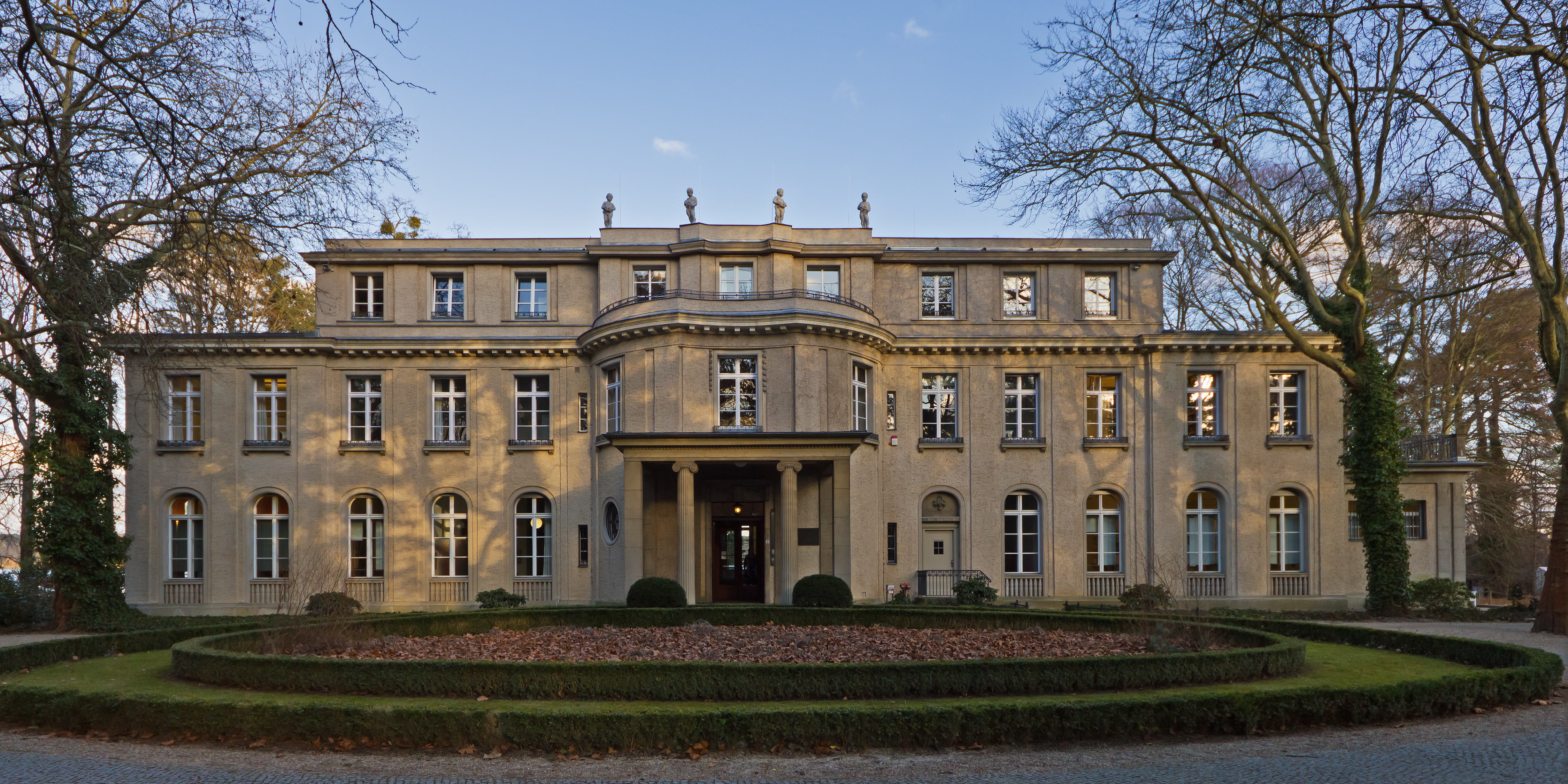|
Anti-Fascist Military Organisation
Antyfaszystowska Organizacja Bojowa ( Polish for ''Anti-Fascist Military Organisation''), AOB, was an underground organization formed in 1942 in the Ghetto in Białystok by former officers of the Polish Land Forces. It took part in the Białystok Ghetto uprising. Its tasks included organisation of escape routes for the people incarcerated in the Ghetto as well as gathering arms and equipment for the future fight against the Germans. Since February 1943 it carried over many attacks on German authorities and armed forces operating in the Ghetto. On August 15, 1943, the AOB members started an ill-fated struggle against the liquidation Liquidation is the process in accounting by which a Company (law), company is brought to an end. The assets and property of the business are redistributed. When a firm has been liquidated, it is sometimes referred to as :wikt:wind up#Noun, w ... of the Ghetto, which is known as the Białystok Ghetto Uprising. See also * Antifascist Front of Sl ... [...More Info...] [...Related Items...] OR: [Wikipedia] [Google] [Baidu] |
Polish Language
Polish (, , or simply , ) is a West Slavic languages, West Slavic language of the Lechitic languages, Lechitic subgroup, within the Indo-European languages, Indo-European language family, and is written in the Latin script. It is primarily spoken in Poland and serves as the official language of the country, as well as the language of the Polish diaspora around the world. In 2024, there were over 39.7 million Polish native speakers. It ranks as the sixth-most-spoken among languages of the European Union. Polish is subdivided into regional Dialects of Polish, dialects. It maintains strict T–V distinction pronouns, Honorifics (linguistics), honorifics, and various forms of formalities when addressing individuals. The traditional 32-letter Polish alphabet has nine additions (, , , , , , , , ) to the letters of the basic 26-letter Latin alphabet, while removing three (x, q, v). Those three letters are at times included in an extended 35-letter alphabet. The traditional set compri ... [...More Info...] [...Related Items...] OR: [Wikipedia] [Google] [Baidu] |
Białystok
Białystok is the largest city in northeastern Poland and the capital of the Podlaskie Voivodeship. It is the List of cities and towns in Poland, tenth-largest city in Poland, second in terms of population density, and thirteenth in area. Białystok is located in the Białystok Uplands of the Podlachia, Podlachian Plain on the banks of the Biała (Supraśl), Biała River, (124 mi) northeast of Warsaw. It has historically attracted migrants from elsewhere in Poland and beyond, particularly from Central Europe, Central and Eastern Europe. This is facilitated by the Belarus–Poland border, nearby border with Belarus also being the eastern border of the European Union, as well as the Schengen Area. The city and its adjacent municipalities constitute Metropolitan Białystok. The city has a Humid continental climate#Dfb/Dwb/Dsb: Mild to warm summer subtype, warm summer continental climate, characterized by warm summers and long frosty winters. Forests are an important part of Bi ... [...More Info...] [...Related Items...] OR: [Wikipedia] [Google] [Baidu] |
Polish Land Forces
The Land Forces () are the land forces of the Polish Armed Forces. They currently contain some 110,000 active personnel and form many components of the European Union and NATO deployments around the world. Poland's recorded military history stretches back a millennium – since the 10th century (see List of Polish wars and History of the Polish Army). Poland's modern army was formed after Poland regained independence following World War I in 1918. History 1918–1938 When Poland regained independence in 1918, it recreated its military which participated in the Polish–Soviet War of 1919–1921, and in the two smaller conflicts ( Polish–Ukrainian War (1918–1919) and the Polish–Lithuanian War (1919–1920)). Initially, right after the First World War, Poland had five military districts (1918–1921): * Poznań Military District (Poznański Okręg Wojskowy), HQ in Poznań * Kraków Military District (Krakowski Okręg Wojskowy), HQ in Kraków * Łódź Military ... [...More Info...] [...Related Items...] OR: [Wikipedia] [Google] [Baidu] |
Białystok Ghetto Uprising
Białystok is the largest city in northeastern Poland and the capital of the Podlaskie Voivodeship. It is the tenth-largest city in Poland, second in terms of population density, and thirteenth in area. Białystok is located in the Białystok Uplands of the Podlachian Plain on the banks of the Biała River, (124 mi) northeast of Warsaw. It has historically attracted migrants from elsewhere in Poland and beyond, particularly from Central and Eastern Europe. This is facilitated by the nearby border with Belarus also being the eastern border of the European Union, as well as the Schengen Area. The city and its adjacent municipalities constitute Metropolitan Białystok. The city has a warm summer continental climate, characterized by warm summers and long frosty winters. Forests are an important part of Białystok's character and occupy around (18% of the administrative area of the city) which places it as the fifth-most forested city in Poland. The first settlers arri ... [...More Info...] [...Related Items...] OR: [Wikipedia] [Google] [Baidu] |
Nazi Ghettos
Beginning with the invasion of Poland during World War II, the Nazi Germany, Nazi regime set up ghettos across German-occupied Europe, German-occupied Eastern Europe in order to segregate and confine Jews, and sometimes Romani people, into small sections of towns and cities furthering their exploitation. In German documents, and signage at ghetto entrances, the Nazis usually referred to them as ''Jüdischer Wohnbezirk'' or ''Wohngebiet der Juden'', both of which translate as the Jewish Quarter (diaspora), Jewish Quarter. There were several distinct types including ''open ghettos'', ''closed ghettos'', ''work'', ''transit'', and ''destruction ghettos'', as defined by the Holocaust, Holocaust historians. In a number of cases, they were the place of Jewish underground resistance against the German occupation, known collectively as the ghetto uprisings. Background and establishment of the ghettos The first anti-Jewish measures were enacted in Germany with the onset of Nazism; these ... [...More Info...] [...Related Items...] OR: [Wikipedia] [Google] [Baidu] |
Final Solution
The Final Solution or the Final Solution to the Jewish Question was a plan orchestrated by Nazi Germany during World War II for the genocide of individuals they defined as Jews. The "Final Solution to the Jewish question" was the official code name for the murder of all Jews within reach, which was not restricted to the European continent. This policy of deliberate and systematic genocide starting across German-occupied Europe was formulated in procedural and geopolitical terms by Nazi leadership in January 1942 at the Wannsee Conference held near Berlin, and culminated in the Holocaust, which saw the murder of 90% of Polish Jews, and two-thirds of the Jewish population of Europe. The nature and timing of the decisions that led to the Final Solution is an intensely researched and debated aspect of the Holocaust. The program evolved during the first 25 months of war leading to the attempt at "murdering every last Jew in the German grasp". Christopher Browning, a histori ... [...More Info...] [...Related Items...] OR: [Wikipedia] [Google] [Baidu] |
Białystok Ghetto Uprising
Białystok is the largest city in northeastern Poland and the capital of the Podlaskie Voivodeship. It is the tenth-largest city in Poland, second in terms of population density, and thirteenth in area. Białystok is located in the Białystok Uplands of the Podlachian Plain on the banks of the Biała River, (124 mi) northeast of Warsaw. It has historically attracted migrants from elsewhere in Poland and beyond, particularly from Central and Eastern Europe. This is facilitated by the nearby border with Belarus also being the eastern border of the European Union, as well as the Schengen Area. The city and its adjacent municipalities constitute Metropolitan Białystok. The city has a warm summer continental climate, characterized by warm summers and long frosty winters. Forests are an important part of Białystok's character and occupy around (18% of the administrative area of the city) which places it as the fifth-most forested city in Poland. The first settlers arri ... [...More Info...] [...Related Items...] OR: [Wikipedia] [Google] [Baidu] |
Antifascist Front Of Slavs In Hungary
Antifascist Front of Slavs in Hungary (Serbo-Croatian: ''Antifašistički front Slovena u Mađarskoj/Антифашистички фронт Словена у Мађарској'', Hungarian: ''Magyarországi Szlávok Antifasiszta Frontja'') was organization founded on February 18, 1945, in Battonya. For General Secretary was elected Dragutin Nedučić from Battonya and for vice-president Stevan Nedučić from Csanádpalota. After ending military administration first in March local organization of AFSH were founded in Bács among Bunjevci and among Šokci in Hercegszántó. Main organizer among Bunjevci was Antun Karagić. After Békés and Bács new organizations were founded around Budapest. In August County Secretariat of AFSH was founded in Pécs and for its secretary Svetozar Lastić was elected. In September AFSH started founding other local organizations in Baranya and Baranya-Bács Slavic Cultural association joined the Front and Martin Laslović was elected as local ... [...More Info...] [...Related Items...] OR: [Wikipedia] [Google] [Baidu] |
Anti-fascist Organisations In Poland
Anti-fascism is a political movement in opposition to fascist ideologies, groups and individuals. Beginning in European countries in the 1920s, it was at its most significant shortly before and during World War II, where the Axis powers were opposed by many countries forming the Allies of World War II and dozens of resistance movements worldwide. Anti-fascism has been an element of movements across the political spectrum and holding many different political positions such as anarchism, communism, pacifism, republicanism, social democracy, socialism and syndicalism as well as centrist, conservative, liberal and nationalist viewpoints. Fascism, a far-right ultra-nationalistic ideology best known for its use by the Italian Fascists and the German Nazis, became prominent beginning in the 1910s. Organization against fascism began around 1920. Fascism became the state ideology of Italy in 1922 and of Germany in 1933, spurring a large increase in anti-fascist action, including German ... [...More Info...] [...Related Items...] OR: [Wikipedia] [Google] [Baidu] |
Jewish Resistance During The Holocaust
Jewish resistance under Nazi rule encompassed various forms of organized underground activities undertaken by Jews against German occupation regimes in Europe during World War II. According to historian Yehuda Bauer, Jewish resistance can be defined as any action that defied Nazi laws and policies. The term is particularly associated with the Holocaust and includes a wide range of responses, from social defiance to both passive and armed resistance by Jews themselves. Due to the overwhelming military power of Nazi Germany and its allies, the system of ghettoization, and the hostility or indifference of various segments of the civilian population, most Jews had limited opportunities for effective military resistance against the Final Solution. Nevertheless, there were numerous instances of resistance, including more than a hundred documented armed uprisings. [...More Info...] [...Related Items...] OR: [Wikipedia] [Google] [Baidu] |
Military Units And Formations Of Poland In World War II
A military, also known collectively as armed forces, is a heavily armed, highly organized force primarily intended for warfare. Militaries are typically authorized and maintained by a sovereign state, with their members identifiable by a distinct military uniform. They may consist of one or more military branches such as an army, navy, air force, space force, marines, or coast guard. The main task of a military is usually defined as defence of their state and its interests against external armed threats. In broad usage, the terms "armed forces" and "military" are often synonymous, although in technical usage a distinction is sometimes made in which a country's armed forces may include other paramilitary forces such as armed police. Beyond warfare, the military may be employed in additional sanctioned and non-sanctioned functions within the state, including internal security threats, crowd control, promotion of political agendas, emergency services and reconstruction, pro ... [...More Info...] [...Related Items...] OR: [Wikipedia] [Google] [Baidu] |





